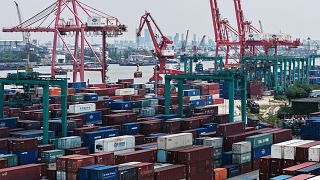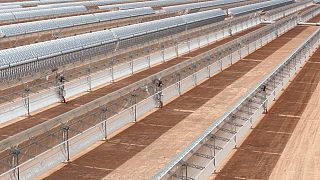Egypt
Egypt is positioned in the world’s sun belt region meaning it is never short of sunshine.
As a result, homeowners are taping into the sun’s power through a feed-in-tariff system created by the government.
Under the scheme set up in 2014, businesses and homeowners with solar panels can make some extra money by selling their unused power to electricity suppliers.
The move is to enable President Fatah al-Sisi creatively reform the fuel subsidy program which is affecting the country’s budget.
Renewable energy providers like Yassin Abdel Ghaffer, Chief Executive of SolarizEgypt, see an opportunity in the government’s program.
“The problem is that we are buying 25 years worth of electricity today. We purchased the entire system. What we were able to do during the past period of time is that we introduced the banking sector to finance the solar stations.
“Therefore there is financial positivity where the owner pays the cost of the station over seven years without an initial down payment. It is now easy and widely spread. This also enabled us to finish 35 projects over the last period.”
With many opting for the relatively cheaper solar energy, Khaled Gasser who heads an association of solar energy developers says the Egyptian government needs to consider SMEs in the renewable energy business.
“There is no doubt that there is success but our ambitions are much higher. The big problem that we are facing at the moment is that the state is concerned about solar power on a mega-project scale.
“The state is trying to get big investors to make huge investments in big projects. But there is a fallback on small and medium sized enterprises. The SMEs will be able to create the needed shift,” said Gasser.
With advancements in the energy sector, more companies are moving towards establishing a solar energy base.
The government has also said its plans to build solar and wind power plants over three years to generate a combined 4,300 megawatt of power.













01:05
Ethiopia's mega-dam on the Nile is "now complete", Prime Minister says
01:52
In Goma, solar power brings light and hope in Ndosho neighbourhood
01:05
U.K-Egypt: Mother of jailed activist hospitalised amid hunger strike
02:20
Tarik Saleh returns to Cannes with explosive political thriller ‘Eagles of the Republic’
Go to video
El-Sissi and Aoun urge Israel to end strikes on Lebanon
Go to video
UN raises alarm over Egypt’s proposed criminal procedure code